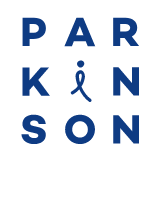- Parkinson’s disease
- Services offered
Free, confidential and bilingual
Opening hoursMonday to Friday : 8:30am – 4:30pm
Saturday and Sunday : closedFor urgent information outside service hours, you can refer to the Info Santé line by calling 8-1-1.
- Research commitment
- Get involved
- Donate
- About us
Home > Parkinsons Disease > Symptoms > Parkinson’s and Stiffness
Parkinson’s and Stiffness
Stiffness associated with Parkinson’s disease refers to stiffness in thelimbs or torso. It is an excessive tension in the muscles that prevents them from stretching and relaxing. It is the most common symptom of the disease. It can affect one side of the body or both.
Stiffness is one of the motor symptoms of Parkinson’s disease, along with slowness of movement and tremors. It does not affect everyone living with the disease.
Some people feel it on one side of the body while others feel it on both sides. It usually appears in the muscles of the shoulders, arms and legs. But it can also be felt in the neck, trunk, hips and ankles.
Stiffness can cause :
- Pain
- Cramps
- Loss of facial expression
- Communication difficulties
- Inability to properly hold utensils
- Difficulty dressing and buttoning clothes
- A stooped posture
- A reduction in range of motion
- Difficulty in getting out of bed or a chair
Stiffness is often confused with other diseases or symptoms associated with aging, such as arthritis, especially in the early stages of the disease.
What is the cause of stiffness in Parkinson’s disease?
The reduction in dopamine levels caused by Parkinson’s disease upsets the balance between the activity of the muscles that are responsible for flexion movements and those responsible for extension movements.
The muscles are thus continuously in a state of contraction.
What can I do to reduce the stiffness of my muscles?
Regular physical activity strengthens your muscles and gives them more flexibility and mobility. A physiotherapist can suggest exercises specifically tailored to manage your stiffness.
A speech-language pathologist can help you promote flexibility in your facial muscles, thereby avoiding the frozen mask and improving your communication.
Avoid staying still and sitting for long periods of time.
The heat helps relax the muscles. Hot baths or the application of a hot water bottle can also help relieve pain.
Massages from a massage therapist experienced in Parkinson’s can also help relax your muscles.
What treatments are available for stiffness?
Taking antiparkinsonian drugs significantly improves muscle stiffness.
Adhering to one’s medication schedule is a key element in the success of treatment.
What can I do to help my loved one?
It is difficult for loved ones to act in the face of stiffness. Encourage your loved one to stay active and do stretching exercises.
You can also help them stick to the schedule for taking their medications and note episodes of stiffness in relation to when they take their medication.
You could also learn some massage therapy techniques. These relax the muscles and therefore reduce the tension felt by your loved one.
How does the stiffness progress?
Although the progression of Parkinson’s disease is unique for each person, the stiffness usually begins in one arm, then spreads to the leg on the same side of the body, then progresses to the trunk and may eventually reach the other side of the body.

